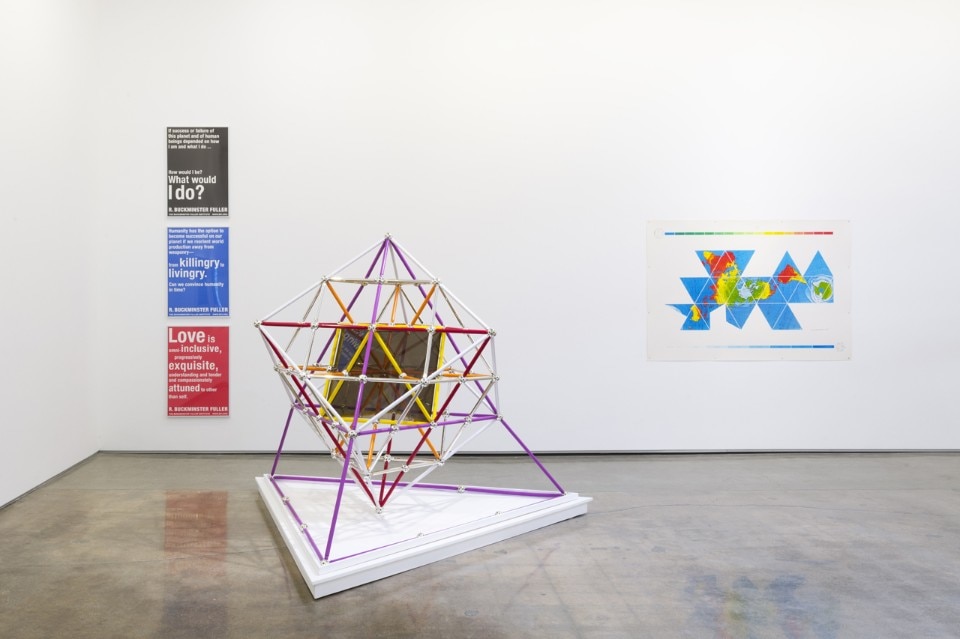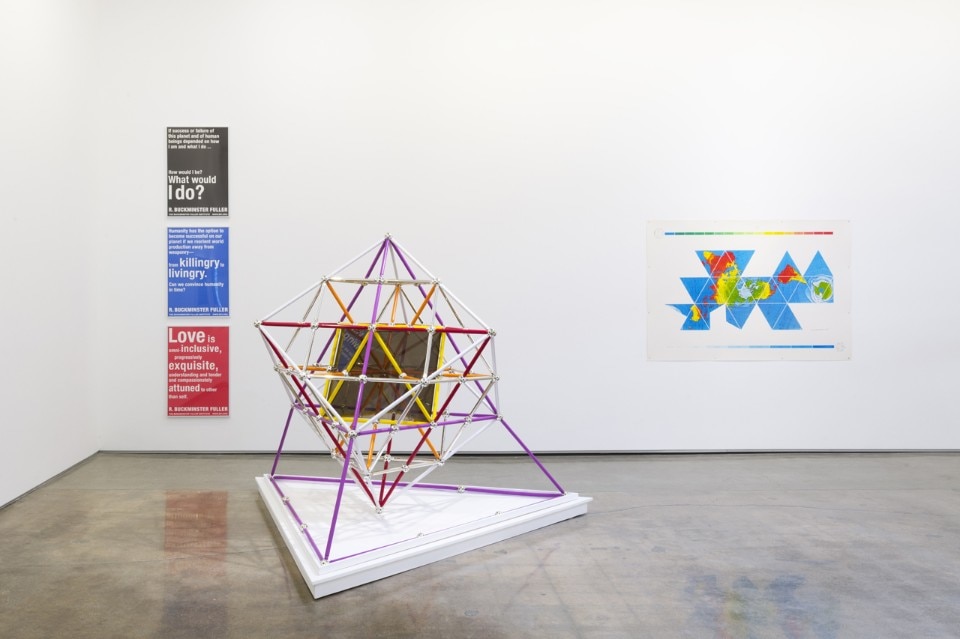Global, networked, repeatable, cross-material, easy to inhabit with or without a family, to drive on a road, to be made sliding on water through some good rowing: when it comes to Richard Buckminster Fuller, it is hard to use such reductive words as world. The subject of Fuller’s research may be better defined as a system.
Thirty-five years after his passing, a great opportunity is given to explore the most precious legacy of such a master in architectural, structural and industrial design, i.e. the capacity to think of the entire world as a system, a network (as Mark Wigley stressed in his Network Fever), an inhabitable structure, a habitat where “more could be done with less”, where innovative integrated design and technology could revolutionize construction and improve human life.
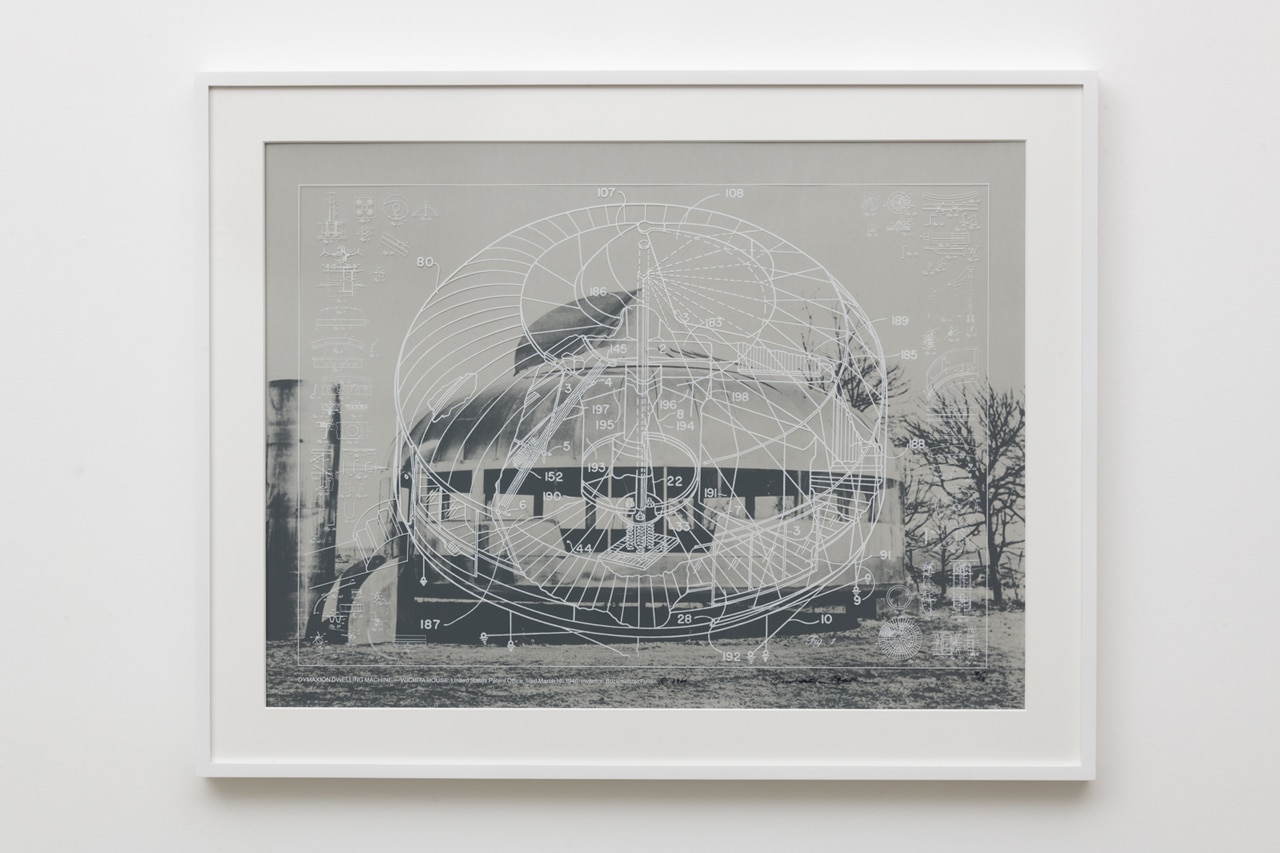
 View gallery
View gallery
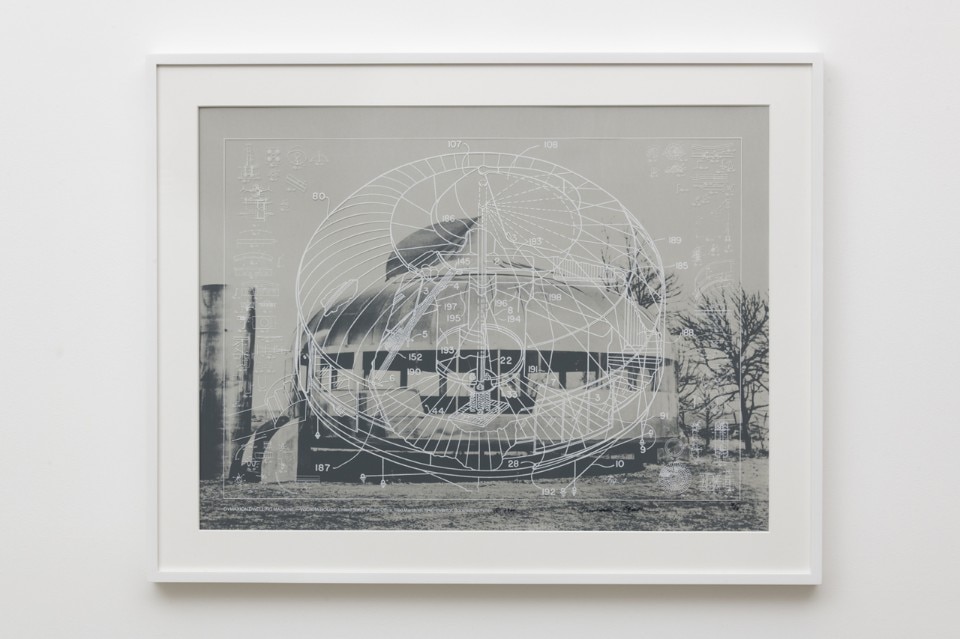
Richard Buckminster Fuller: Inventions and models
Exhibition view, Edward Cella Art & Architecture, Los Angeles, 2018
Buckminster Fuller (1895-1983)
Dymaxion Dwelling House - Wichata House, From Inventions Portfolio, Edition 7 of 60, 1981
Screenprinted clear film, a duotone screenprint on Lenox 100% rag paper, and a blue backing leaf of Curtis 100% rag paper
Courtesy of Edward Cella Art & Architecture.

Richard Buckminster Fuller: Inventions and models
Exhibition view, Edward Cella Art & Architecture, Los Angeles, 2018
Buckminster Fuller (1895-1983)
Watercraft - Rowing Needels, From Inventions Portfolio, Edition 7 of 60, 1981
Screenprinted clear film, a duotone screenprint on Lenox 100% rag paper, and a blue backing leaf of Curtis 100% rag paper
Courtesy of Edward Cella Art & Architecture.
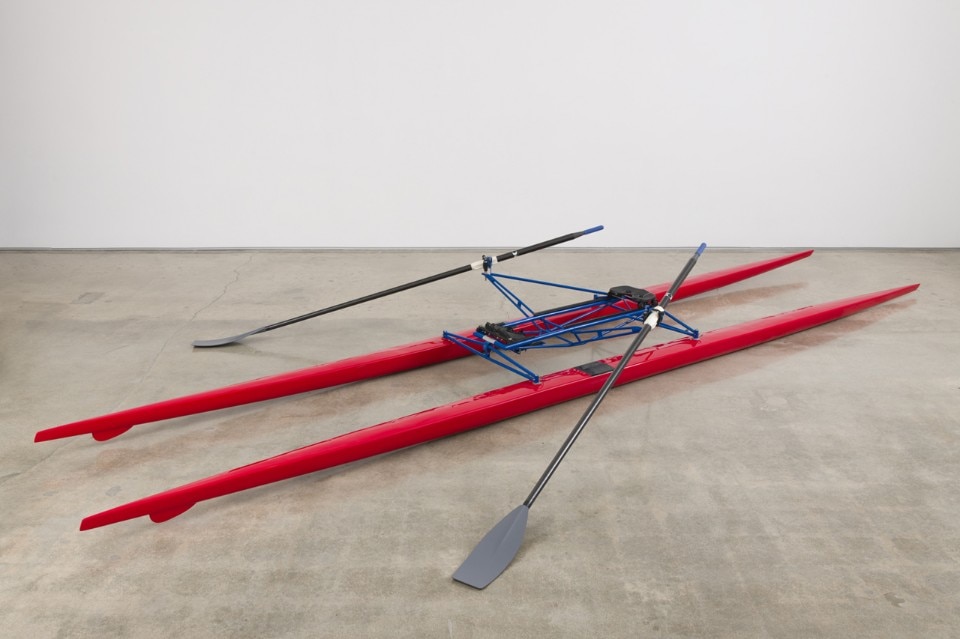
Richard Buckminster Fuller: Inventions and models
Exhibition view, Edward Cella Art & Architecture, Los Angeles, 2018
Buckminster Fuller (1895-1983)
Dymaxion Rowing Shell, Edition 4 of 5, 1970/1999
Fiberglass, aluminum, carbon fiber, paint.
Courtesy of Edward Cella Art & Architecture.

Richard Buckminster Fuller: Inventions and models
Exhibition view, Edward Cella Art & Architecture, Los Angeles, 2018
Buckminster Fuller (1895-1983)
Dymaxion Air-Ocean World Map, AP 19/20, Edition of 85, 1980
29-color silkscreen on Arches 100% rag paper.
Courtesy of Edward Cella Art & Architecture.
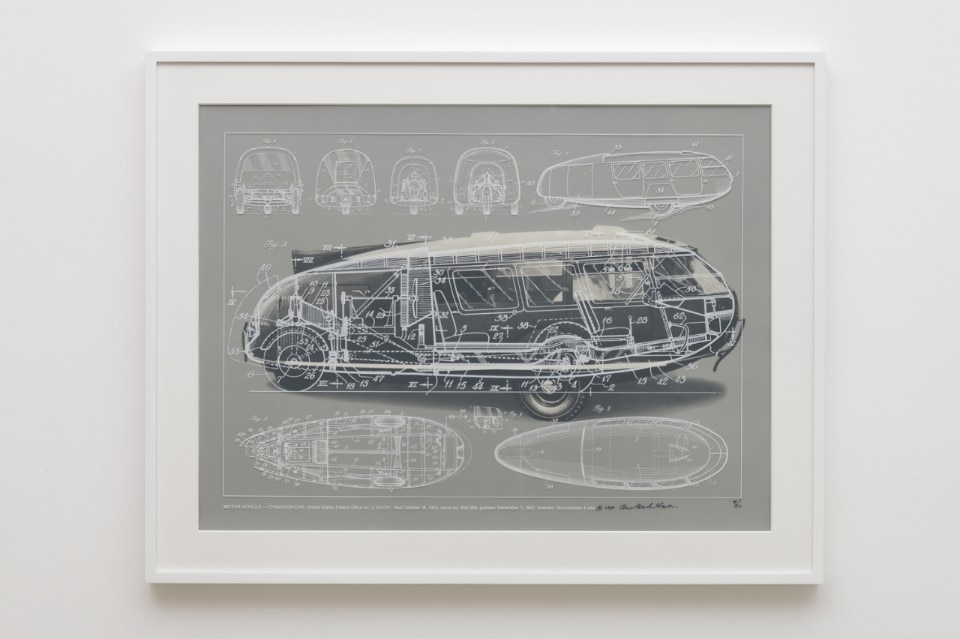
Richard Buckminster Fuller: Inventions and models
Exhibition view, Edward Cella Art & Architecture, Los Angeles, 2018
Buckminster Fuller (1895-1983)
Motor Vehicle - Dymaxion Car, From Inventions Portfolio, Edition 7 of 60, 1981
Screenprinted clear film, a duotone screenprint on Lenox 100% rag paper, and a blue backing leaf of Curtis 100% rag paper
Courtesy of Edward Cella Art & Architecture.
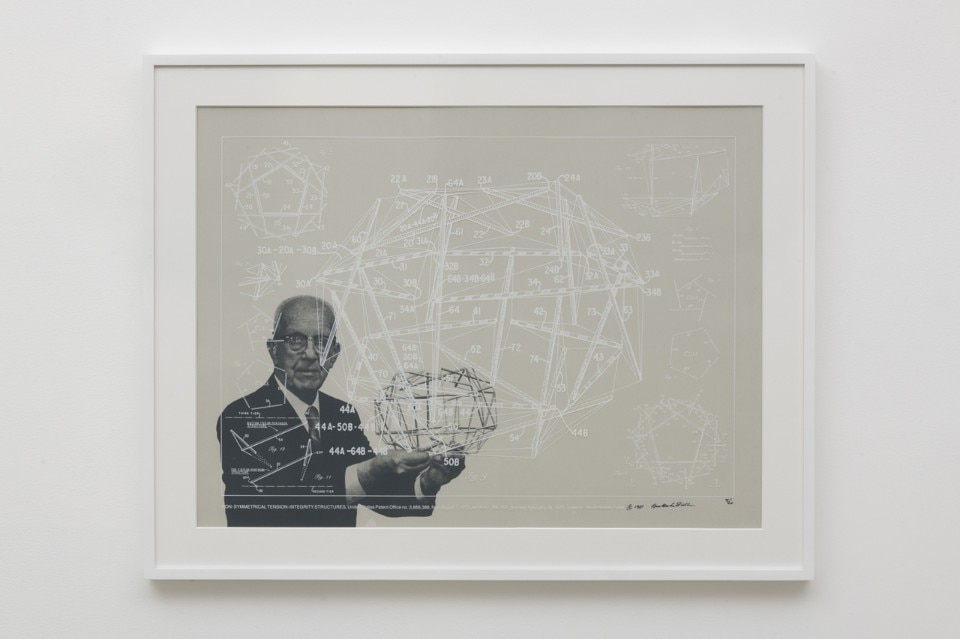
Richard Buckminster Fuller: Inventions and models
Exhibition view, Edward Cella Art & Architecture, Los Angeles, 2018
Buckminster Fuller (1895-1983)
Non-Symmetrical, Tension-Integrity Structures, From Invention Portfolio, Edition 7 of 60, 1981
Screenprinted clear film, a duotone screenprint on Lenox 100% rag paper, and a blue backing leaf of Curtis 100% rag paper
Courtesy of Edward Cella Art & Architecture.
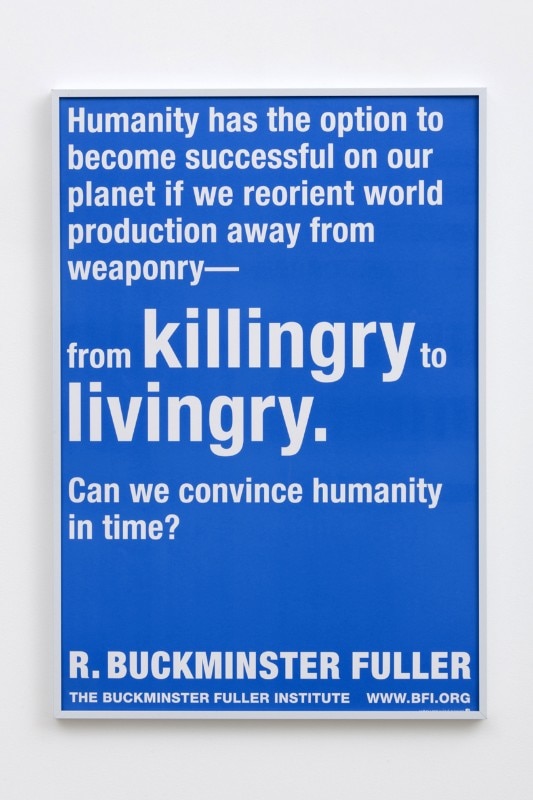
Richard Buckminster Fuller: Inventions and models
Exhibition view, Edward Cella Art & Architecture, Los Angeles, 2018
Buckminster Fuller (1895-1983)
From Killingry to livingry,
Offset poster
Courtesy of Edward Cella Art & Architecture.

Richard Buckminster Fuller: Inventions and models
Exhibition view, Edward Cella Art & Architecture, Los Angeles, 2018
Buckminster Fuller (1895-1983)
What Would I Do?,
Offset poster
Courtesy of Edward Cella Art & Architecture.
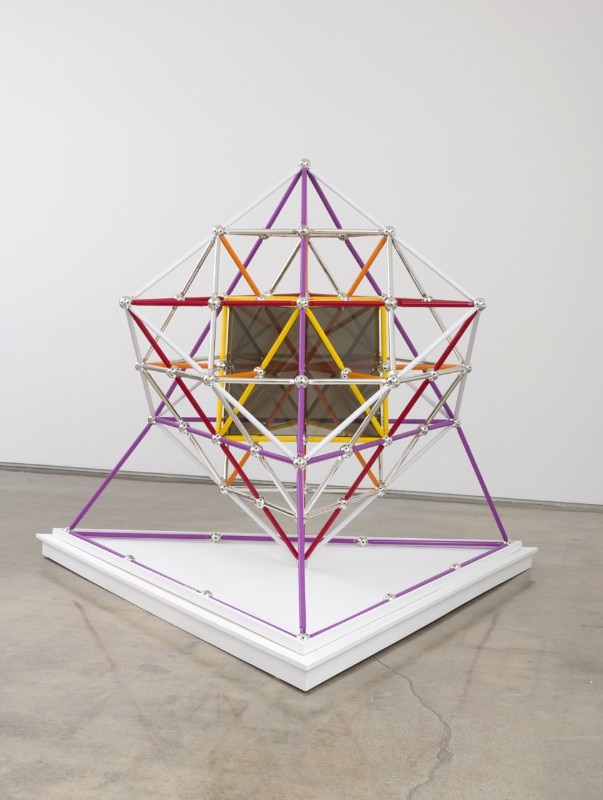
Richard Buckminster Fuller: Inventions and models
Exhibition view, Edward Cella Art & Architecture, Los Angeles, 2018
Buckminster Fuller (1895-1983)
Duo Tet Star Polyhedra, Edition 4 of 10, 1980
Molded thermoplastic structural tubes and connectors, acrylic octahedron, acrylic and epoxy resin paint. Courtesy of Edward Cella Art & Architecture.
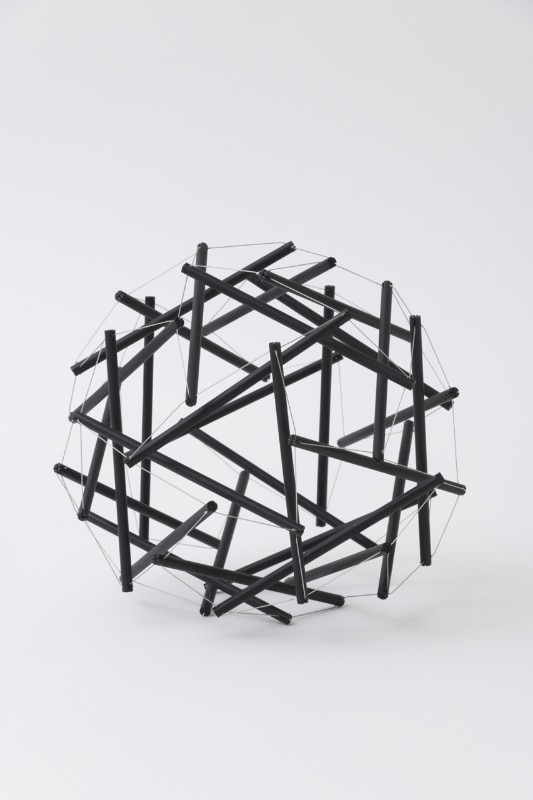
Richard Buckminster Fuller: Inventions and models
Exhibition view, Edward Cella Art & Architecture, Los Angeles, 2018
Buckminster Fuller (1895-1983)
Geodesic Tensegrity Sphere, 30 Strut, 3 Frequency Dome, Carbon C-60 Finish, Edition 1 of 1,
Stainless steel rod and stainless wire tendons, carbon finish
Courtesy of Edward Cella Art & Architecture.

Richard Buckminster Fuller: Inventions and models
Exhibition view, Edward Cella Art & Architecture, Los Angeles, 2018
Buckminster Fuller (1895-1983)
Vector Equilibrium Jitterbug Duo, Edition 8 of 10, 1980/2008
Stainless steel rods and hinges
Courtesy of Edward Cella Art &Architecture.

Richard Buckminster Fuller: Inventions and models
Exhibition view, Edward Cella Art & Architecture, Los Angeles, 2018
Buckminster Fuller (1895-1983)
Geodesic Tensegrity Sphere, 120 Strut, 4 Frequency Dome. Edition 1 of 1, 1980
Aluminum rods and stainless wire tendons
Courtesy of Edward Cella Art & Architecture.
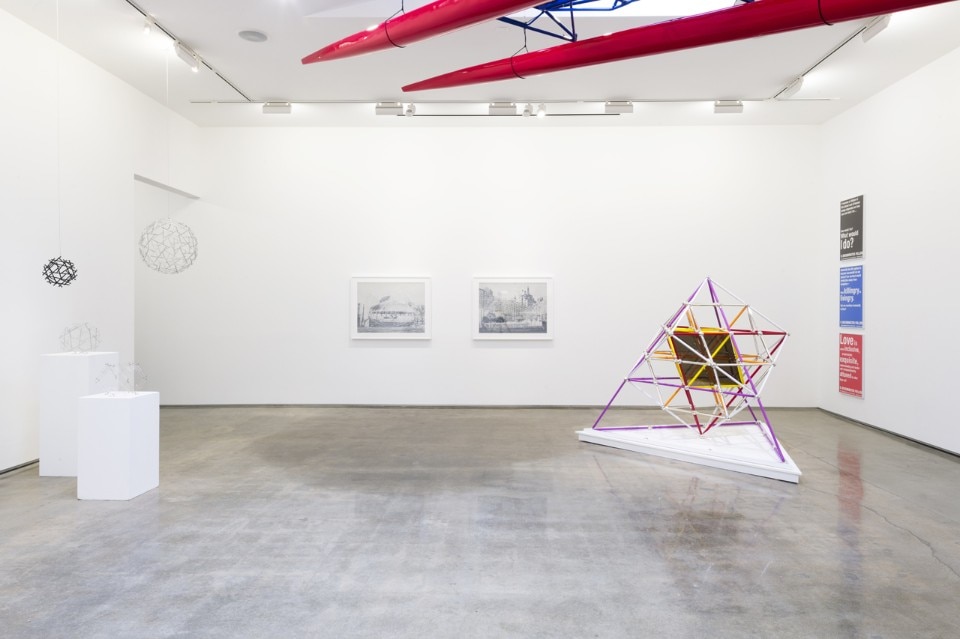
Richard Buckminster Fuller: Inventions and models
Exhibition view, Edward Cella Art & Architecture, Los Angeles, 2018
“R. Buckminster Fuller: Inventions and Models”, installation view, Edward Cella Art & Architecture, 2018. Courtesy Edward Cella Art & Architecture.
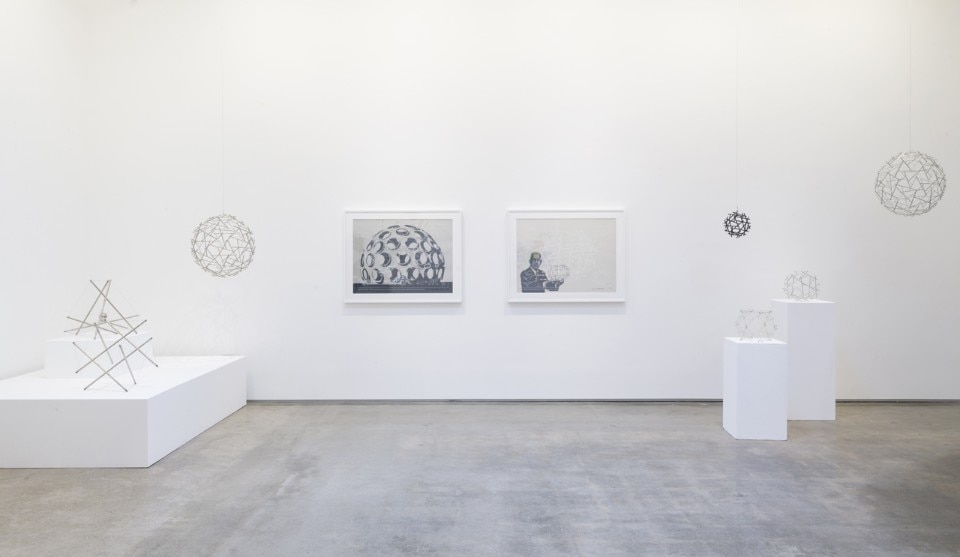
Richard Buckminster Fuller: Inventions and models
Exhibition view, Edward Cella Art & Architecture, Los Angeles, 2018
“R. Buckminster Fuller: Inventions and Models”, installation view, Edward Cella Art & Architecture, 2018. Courtesy Edward Cella Art & Architecture.

Richard Buckminster Fuller: Inventions and models
Exhibition view, Edward Cella Art & Architecture, Los Angeles, 2018
Buckminster Fuller (1895-1983)
Dymaxion Dwelling House - Wichata House, From Inventions Portfolio, Edition 7 of 60, 1981
Screenprinted clear film, a duotone screenprint on Lenox 100% rag paper, and a blue backing leaf of Curtis 100% rag paper
Courtesy of Edward Cella Art & Architecture.

Richard Buckminster Fuller: Inventions and models
Exhibition view, Edward Cella Art & Architecture, Los Angeles, 2018
Buckminster Fuller (1895-1983)
Watercraft - Rowing Needels, From Inventions Portfolio, Edition 7 of 60, 1981
Screenprinted clear film, a duotone screenprint on Lenox 100% rag paper, and a blue backing leaf of Curtis 100% rag paper
Courtesy of Edward Cella Art & Architecture.

Richard Buckminster Fuller: Inventions and models
Exhibition view, Edward Cella Art & Architecture, Los Angeles, 2018
Buckminster Fuller (1895-1983)
Dymaxion Rowing Shell, Edition 4 of 5, 1970/1999
Fiberglass, aluminum, carbon fiber, paint.
Courtesy of Edward Cella Art & Architecture.

Richard Buckminster Fuller: Inventions and models
Exhibition view, Edward Cella Art & Architecture, Los Angeles, 2018
Buckminster Fuller (1895-1983)
Dymaxion Air-Ocean World Map, AP 19/20, Edition of 85, 1980
29-color silkscreen on Arches 100% rag paper.
Courtesy of Edward Cella Art & Architecture.

Richard Buckminster Fuller: Inventions and models
Exhibition view, Edward Cella Art & Architecture, Los Angeles, 2018
Buckminster Fuller (1895-1983)
Motor Vehicle - Dymaxion Car, From Inventions Portfolio, Edition 7 of 60, 1981
Screenprinted clear film, a duotone screenprint on Lenox 100% rag paper, and a blue backing leaf of Curtis 100% rag paper
Courtesy of Edward Cella Art & Architecture.

Richard Buckminster Fuller: Inventions and models
Exhibition view, Edward Cella Art & Architecture, Los Angeles, 2018
Buckminster Fuller (1895-1983)
Non-Symmetrical, Tension-Integrity Structures, From Invention Portfolio, Edition 7 of 60, 1981
Screenprinted clear film, a duotone screenprint on Lenox 100% rag paper, and a blue backing leaf of Curtis 100% rag paper
Courtesy of Edward Cella Art & Architecture.

Richard Buckminster Fuller: Inventions and models
Exhibition view, Edward Cella Art & Architecture, Los Angeles, 2018
Buckminster Fuller (1895-1983)
From Killingry to livingry,
Offset poster
Courtesy of Edward Cella Art & Architecture.

Richard Buckminster Fuller: Inventions and models
Exhibition view, Edward Cella Art & Architecture, Los Angeles, 2018
Buckminster Fuller (1895-1983)
What Would I Do?,
Offset poster
Courtesy of Edward Cella Art & Architecture.

Richard Buckminster Fuller: Inventions and models
Exhibition view, Edward Cella Art & Architecture, Los Angeles, 2018
Buckminster Fuller (1895-1983)
Duo Tet Star Polyhedra, Edition 4 of 10, 1980
Molded thermoplastic structural tubes and connectors, acrylic octahedron, acrylic and epoxy resin paint. Courtesy of Edward Cella Art & Architecture.

Richard Buckminster Fuller: Inventions and models
Exhibition view, Edward Cella Art & Architecture, Los Angeles, 2018
Buckminster Fuller (1895-1983)
Geodesic Tensegrity Sphere, 30 Strut, 3 Frequency Dome, Carbon C-60 Finish, Edition 1 of 1,
Stainless steel rod and stainless wire tendons, carbon finish
Courtesy of Edward Cella Art & Architecture.

Richard Buckminster Fuller: Inventions and models
Exhibition view, Edward Cella Art & Architecture, Los Angeles, 2018
Buckminster Fuller (1895-1983)
Vector Equilibrium Jitterbug Duo, Edition 8 of 10, 1980/2008
Stainless steel rods and hinges
Courtesy of Edward Cella Art &Architecture.

Richard Buckminster Fuller: Inventions and models
Exhibition view, Edward Cella Art & Architecture, Los Angeles, 2018
Buckminster Fuller (1895-1983)
Geodesic Tensegrity Sphere, 120 Strut, 4 Frequency Dome. Edition 1 of 1, 1980
Aluminum rods and stainless wire tendons
Courtesy of Edward Cella Art & Architecture.

Richard Buckminster Fuller: Inventions and models
Exhibition view, Edward Cella Art & Architecture, Los Angeles, 2018
“R. Buckminster Fuller: Inventions and Models”, installation view, Edward Cella Art & Architecture, 2018. Courtesy Edward Cella Art & Architecture.

Richard Buckminster Fuller: Inventions and models
Exhibition view, Edward Cella Art & Architecture, Los Angeles, 2018
“R. Buckminster Fuller: Inventions and Models”, installation view, Edward Cella Art & Architecture, 2018. Courtesy Edward Cella Art & Architecture.
Inspired by basic geometries and the forces of nature, Fuller applied the tetrahedron and tensegrity forms in structural systems that offered unprecedented solutions to specific human problems, bringing his designs to span in scale from domestic to global. “Richard Buckminster Fuller: Inventions and models”, on show at Edward Cella Art & Architecture, Los Angeles, centers around the Inventions portfolio, and includes a group of unique structural models, limited edition prints and rarer works of ephemera following the structure in its migration through housing, transportation, and cartography. This exhibition is mainly based on pieces currently kept in private collections, and integrated by a public program in cooperation with the Buckminster Fuller Institute.
Fuller operated as a practical philosopher, shaping his positions into inventions, the Artifacts: the exhibition points out the role of these formulations within a global trans-disciplinary debate. In the words of Edward Cella: “Fuller remains an influential figure in many arenas and fields as he was first and foremost an interdisciplinary thinker. His cross disciplinary approach is particularly relevant today especially in light of the growing environmental crises. Fuller's focus on sustainability and environment in his design work was not just ahead of the curve but has properly identified the central issue animating the dialogue in 21st century design and architecture and many other fields. His notion of ‘spaceship Earth’ continues to be a popular means to remind humanity of our role in caring for our planet through intelligent design. Perhaps these notions are encapsulated best in his patent designs for the (Dymaxion) Wichita House. The Wichita House was one of a series of concept houses that explored mass production and industrialized processes to re-imagine how housing was developed. Efficiencies of scale, reducing waste and minimizing resources were ideas that Fuller proposed to make homes not only more affordable but also better suited to the environment.”
- Exhibition:
- R. Buckminster Fuller: Inventions and Models
- Venue:
- Edward Cella Art & Architecture
- Address:
- 2754 S. La Cienega Blvd, Los Angeles
- Opening dates:
- 8 September – 27 October 2018


